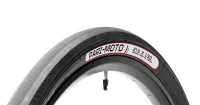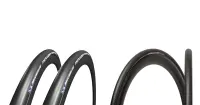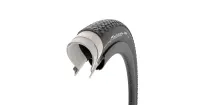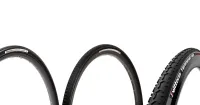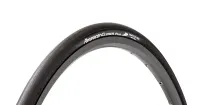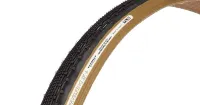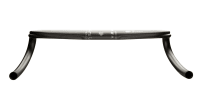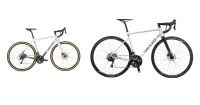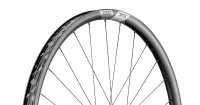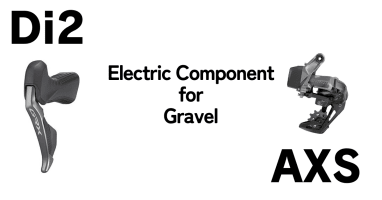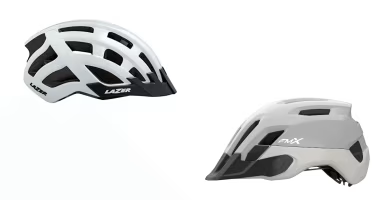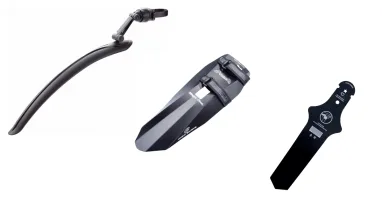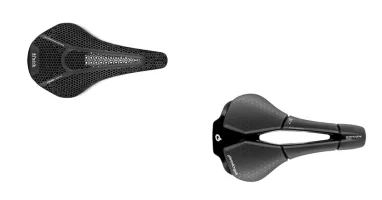Language Menu
- 日本語
- English
Which type is best? Get to know the different types of gravel tires.
Gravel tires are in between the properties of road tires and MTB tires, and there is a lineup of tires with both properties. In this issue, we will introduce the different types of gravel tires and how to choose and customize them for different uses.
Modified at: 2023.7.4Posted at: 2022.9.7
Table Of Contents
- Types of gravel tires
- Slick Tires
- Block Tire
- Semi-slick tires
- Which type of gravel tire should I choose?
- It is best to "use different types for different purposes
- Semi-slicks are recommended if you want to be prepared for all roads.
- If you use gravel tires for commuting to work or school, definitely go for slick tires.
Types of gravel tires
Slick Tires
Slick tires are common on “non-gravel” road bikes. Slick tires are tires without grooves.
The purpose of having no grooves on the tire is to increase the tire’s grip on the road surface, allowing a thin, light tire to grip the road surface well.
On the other hand, because they do not have knobs like block tires, they have the disadvantage of not being able to “catch bumps” when driving on unpaved roads.
Since slick tires have such characteristics, one might ask, “Then, why not just use a regular road tire?” However, many gravel slick tires have improved puncture resistance, and they are used not only by users who mainly ride on paved roads on gravel bikes, but also by road bike users who prefer more durable tires.
Block Tire
Block tires are the exact opposite of slick tires. They are characterized by “knobs” on the tire that are on blocks, which allow them to catch mud and gravel to avoid slipping on rough roads, and they boast high driving performance.
On the other hand, block tires have knobs that make it difficult to grip the road surface on paved roads, and the tires themselves are often heavy tires, so there is a disadvantage that “the nimble ride like a road bike is compromised” when mounted on a gravel bike.
Therefore, in most cases, block tires are installed on gravel bikes "when riding mainly on unpaved roads such as muddy or gravel roads.
Semi-slick tires
Semi-slick tires are halfway between slick and block tires.
The tire center, which catches the road surface on pavement, is slick, and the side portions are small blocks in order to catch gravel well on gravel. In other words, a semi-slick tire is "suitable for both paved and unpaved roads.
Semi-slick tires are truly “tires for gravel bikes,” and in fact, many gravel bike users as well as road bike users who want to enjoy gravel on their road bikes love them.
Semi-slick tires seem to have all the advantages, but their disadvantage is that they are “halfway”.
If you are mainly riding on paved roads, slick tires can provide a more nimble ride, and on gravel or rough roads that are seriously gouged out, they cannot catch the surface as well as block tires. It sounds good to say that it can handle both, but it can also be said that it is an “either/or” tire.
However, for users who are new to gravel and other rough terrain, this half-heartedness is a good reason to introduce gravel tires.
Which type of gravel tire should I choose?
It is best to "use different types for different purposes
Gravel bikes are designed to be ridden in a variety of situations, but in Japan, where paved roads are widely maintained, it is unlikely that you will "always ride on gravel. They should be interspersed with paved roads at some point.
In this sense, it is best to use slick or semi-slick tires for everyday riding, and change to block tires when going on full-scale gravel or rough roads, or prepare a set of wheels for that purpose.
Fortunately, road bikes are so easy to change wheels on that it only takes about 5 minutes to change them before a ride.
Semi-slicks are recommended if you want to be prepared for all roads.
If changing tires is a hassle and you cannot afford multiple wheels, choose semi-slick tires that can handle all roads with one set of tires.
Semi-slicks will allow you to handle gravel while maintaining some of the nimbleness of a road bike. However, the knobs on semi-slicks are smaller, so the knobs will wear out more easily when riding on pavement with high road resistance.
Once you operate gravel tires on semi-slicks, it will give you a chance to think about how you want to operate your tires and how you want to customize your wheels.
If you use gravel tires for commuting to work or school, definitely go for slick tires.
If you are going to use a gravel bike for commuting to work or school, slick tires are the way to go.
If you are pressed for time, the key to getting to your destination quickly and with little effort is to customize your gravel bike to be more like a road bike.
However, if your commuting route includes a lot of forest roads or gravel, a semi-slick bike will be more drivable. This is a matter of consulting with your commuting route.
Let's master gravel tires!
Gravel tires are a characteristic of gravel bikes. One of the interesting aspects of gravel bikes is that depending on what tires are set and at what air pressure, the ride and comfort can vary greatly.
Advantages of MTB tires on gravel bikes and how to choose them
Gravel tires are getting fatter every year, but MTB tires are still the best choice for serious dirt road riding. The following is a summary of the advantages of installing MTB tires on gravel bikes and how to choose the right ones.
Choosing Gravel Tires for Road Bikes
Even if your road bike is mainly used for riding on paved roads, you can enjoy gravel riding by installing gravel tires. In this issue, we have compiled a list of gravel tire selection and precautions for road bikes.
How to choose gravel tires for those who just want to go fast
Gravel bikes are said to be slower than road bikes. If you want to go faster on a gravel bike! If you want to go faster on a gravel road bike, you can make it lighter and faster by simply customizing the tires.
The Perfect Guide to Choosing Gravel Tires
One of the most fun and most affordable customizations for gravel bikes is changing tires. However, gravel bikes, by their very nature, are also the most difficult to choose tires for. In this article, we will thoroughly explain how best to choose tires for gravel bikes.
ETRTO standards for 650B tires and their inch counterparts
Many gravel bike riders love 650B tires. However, when looking for a 650B tire, the various size designations can be confusing. In this article, we will look at the different size designations for 650B tires and check each designation with its corresponding chart.
Is tubeless the best? Which type of gravel tire is best?
Tire selection is one of the most enjoyable and difficult aspects of gravel bike customization. In this article, we will look at the differences between tire types and the types of tires to choose for your gravel bike, along with their advantages and disadvantages.
What is a gravel tire? Definition of Gravel Tire
Gravel tires are rapidly gaining popularity in the road bike community. What is a gravel tire and how is it defined?
Current Article
Which type is best? Get to know the different types of gravel tires.
Gravel tires are in between the properties of road tires and MTB tires, and there is a lineup of tires with both properties. In this issue, we will introduce the different types of gravel tires and how to choose and customize them for different uses.
Advantages and disadvantages of slick tires on gravel bikes
Slick tires are the standard for road bikes on paved roads. We have summarized the advantages and disadvantages of daring to install slick tires on gravel bikes, which are often equipped with knobbed gravel tires.
Why so many gravel bike users love tubeless tires? Advantages and disadvantages
One of the most popular customizations for gravel bikes is to convert the tires to tubeless. The following is a summary of the advantages and disadvantages of tubeless and why it is a favorite on gravel bikes.
Easily convert your bicycle to gravel bike
Gravel bikes are often bought from manufacturers who sell them as "gravel bikes," but it is also possible to customize a road bike or cross bike and "gravel bike-ize" it.
How to convert a hybrid bike into a gravel bike
Hybrid bikes and gravel bikes are similar in concept. Hybrid bikes can be converted to gravel with little replacement cost, depending on the component parts.
Choosing Gravel Tires for Road Bikes
Even if your road bike is mainly used for riding on paved roads, you can enjoy gravel riding by installing gravel tires. In this issue, we have compiled a list of gravel tire selection and precautions for road bikes.
Current Article
Which type is best? Get to know the different types of gravel tires.
Gravel tires are in between the properties of road tires and MTB tires, and there is a lineup of tires with both properties. In this issue, we will introduce the different types of gravel tires and how to choose and customize them for different uses.
Is tubeless the best? Which type of gravel tire is best?
Tire selection is one of the most enjoyable and difficult aspects of gravel bike customization. In this article, we will look at the differences between tire types and the types of tires to choose for your gravel bike, along with their advantages and disadvantages.
How to choose a handlebar for a gravel bike
Gravel bikes look almost the same as road bikes, but their purpose is somewhat different. The following is a summary of how to select handlebars, which are important for the operation and position of the bike.
How to Choose Sprockets for Gravel Bikes
Among the customizations for gravel bikes, one of the easiest even for beginners to do and with relatively little impact on the ride is to change the sprocket. In this article, we have compiled a list of sprocket selection methods unique to gravel bikes.
How to choose gravel tires for those who just want to go fast
Gravel bikes are said to be slower than road bikes. If you want to go faster on a gravel bike! If you want to go faster on a gravel road bike, you can make it lighter and faster by simply customizing the tires.
Optimizing handlebar position on gravel road bikes
The handlebar position of a gravel bike is similar to that of a road bike but somewhat different. The following is a summary of the concept of handlebar position and how to achieve the optimal handlebar position.
Why so popular on gravel bikes? Advantages and disadvantages of flared handles and how to choose
Flared handlebars are being increasingly adopted on gravel bikes. We will look at what flared handlebars are and why they are so popular, starting with their advantages and disadvantages.
Let's master gravel tires!
Gravel tires are a characteristic of gravel bikes. One of the interesting aspects of gravel bikes is that depending on what tires are set and at what air pressure, the ride and comfort can vary greatly.
Advantages of MTB tires on gravel bikes and how to choose them
Gravel tires are getting fatter every year, but MTB tires are still the best choice for serious dirt road riding. The following is a summary of the advantages of installing MTB tires on gravel bikes and how to choose the right ones.
Choosing Gravel Tires for Road Bikes
Even if your road bike is mainly used for riding on paved roads, you can enjoy gravel riding by installing gravel tires. In this issue, we have compiled a list of gravel tire selection and precautions for road bikes.
How to choose gravel tires for those who just want to go fast
Gravel bikes are said to be slower than road bikes. If you want to go faster on a gravel bike! If you want to go faster on a gravel road bike, you can make it lighter and faster by simply customizing the tires.
The Perfect Guide to Choosing Gravel Tires
One of the most fun and most affordable customizations for gravel bikes is changing tires. However, gravel bikes, by their very nature, are also the most difficult to choose tires for. In this article, we will thoroughly explain how best to choose tires for gravel bikes.
ETRTO standards for 650B tires and their inch counterparts
Many gravel bike riders love 650B tires. However, when looking for a 650B tire, the various size designations can be confusing. In this article, we will look at the different size designations for 650B tires and check each designation with its corresponding chart.
Is tubeless the best? Which type of gravel tire is best?
Tire selection is one of the most enjoyable and difficult aspects of gravel bike customization. In this article, we will look at the differences between tire types and the types of tires to choose for your gravel bike, along with their advantages and disadvantages.
What is a gravel tire? Definition of Gravel Tire
Gravel tires are rapidly gaining popularity in the road bike community. What is a gravel tire and how is it defined?
Current Article
Which type is best? Get to know the different types of gravel tires.
Gravel tires are in between the properties of road tires and MTB tires, and there is a lineup of tires with both properties. In this issue, we will introduce the different types of gravel tires and how to choose and customize them for different uses.
Advantages and disadvantages of slick tires on gravel bikes
Slick tires are the standard for road bikes on paved roads. We have summarized the advantages and disadvantages of daring to install slick tires on gravel bikes, which are often equipped with knobbed gravel tires.
Why so many gravel bike users love tubeless tires? Advantages and disadvantages
One of the most popular customizations for gravel bikes is to convert the tires to tubeless. The following is a summary of the advantages and disadvantages of tubeless and why it is a favorite on gravel bikes.
The standard for gravel bikes! Tubeless Guide
Tubeless tires, which can reduce puncture risk and increase ride comfort, are a staple of gravel bikes. This is a guide on how to choose and operate tubeless tires.
Is tubeless the best? Which type of gravel tire is best?
Tire selection is one of the most enjoyable and difficult aspects of gravel bike customization. In this article, we will look at the differences between tire types and the types of tires to choose for your gravel bike, along with their advantages and disadvantages.
Why so many gravel bike users love tubeless tires? Advantages and disadvantages
One of the most popular customizations for gravel bikes is to convert the tires to tubeless. The following is a summary of the advantages and disadvantages of tubeless and why it is a favorite on gravel bikes.
Ride more comfort! Ride gravel bike with proper air pressure!
There is a "proper air pressure" for bicycle tires. This section summarizes what the correct air pressure is, how to check it and how to get the correct air pressure, and the changes in riding that can be achieved by changing the air pressure.
The Perfect Guide to Choosing Gravel Tires
One of the most fun and most affordable customizations for gravel bikes is changing tires. However, gravel bikes, by their very nature, are also the most difficult to choose tires for. In this article, we will thoroughly explain how best to choose tires for gravel bikes.
Current Article
Which type is best? Get to know the different types of gravel tires.
Gravel tires are in between the properties of road tires and MTB tires, and there is a lineup of tires with both properties. In this issue, we will introduce the different types of gravel tires and how to choose and customize them for different uses.
Expand your gravel bike enjoyment!
「中途半端」とも言われるグラベルバイクですが、実はカスタマイズやセッティング次第でいろんな道を楽しめます。グラベルバイクの楽しみの幅を広げる方法を解説します。
Bicycle travel, which involves biking around a destination, is an activity that is growing in popularity. However, the type of bicycle you choose will greatly affect the enjoyment and safety of your trip. In this article, we will discuss the best types of sports bicycles for bicycle travel and how to choose the right one.
Is it a good idea to use a gravel bike for commuting to work or school? No?
Due to health consciousness and other factors, more and more people are commuting to work and school by bicycle. In this issue, we will compare and verify whether gravel bikes are a good choice for commuting to work and school, based on the characteristics of each bike type and the different routes to work and school.
Don't want a gravel bike? Will you regret buying one?
Gravel bikes are rapidly gaining popularity in the sports bicycle community, but some buyers say they don't need them and regret buying them. In this issue, we summarize why people say they don't need a gravel bike and how to enjoy such a gravel bike.
How should you decide on a position for a gravel bike, which is intended to be between a road bike and a MTB?
How to convert a gravel bike into a road bike
A gravel bike, a derivative of a road bike, can be ridden on paved roads without modification. However, when converted to a road bike, they can be "ridden more like a road bike.
How to choose gravel tires for those who just want to go fast
Gravel bikes are said to be slower than road bikes. If you want to go faster on a gravel bike! If you want to go faster on a gravel road bike, you can make it lighter and faster by simply customizing the tires.
How to customize a gravel bike with MTB wheels and how to choose
Gravel bikes can also enjoy MTB-like riding with fat tires. If you are going to enjoy riding on rough roads, one way to have fun is to customize it with MTB wheels to make it more MTB-like.
Current Article
Which type is best? Get to know the different types of gravel tires.
Gravel tires are in between the properties of road tires and MTB tires, and there is a lineup of tires with both properties. In this issue, we will introduce the different types of gravel tires and how to choose and customize them for different uses.
How to add suspension to a gravel bike
Gravel bikes can be ridden on unpaved roads, but the basic standard is a "rigid fork" without suspension. In this article, we summarize how to add suspension to a gravel bike without suspension.
What kind of road is gravel? The kind of riding a gravel bike is designed to do
What kind of "gravel" roads can gravel bikes be ridden on? We have compiled a definition and a summary of how the manufacturer expects you to ride it, and how it is not expected to be ridden.






